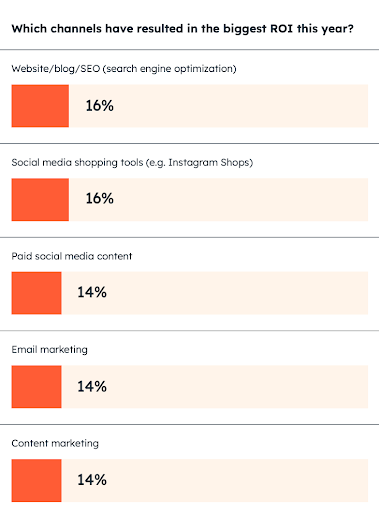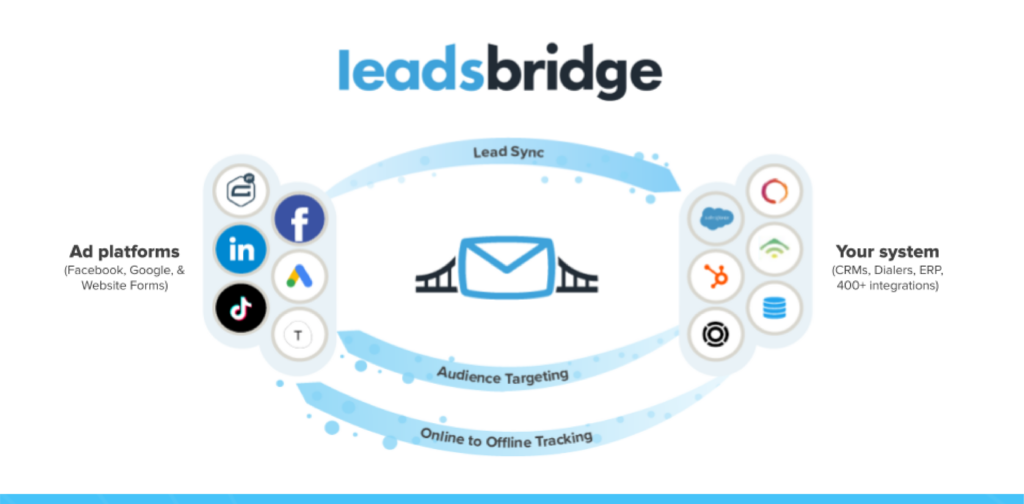Lead generation & lead management automation guide for marketers

In the fast-paced world of online lead generation, it’s crucial for marketers to have effective digital marketing strategies in place in order to drive business success and growth. Understanding the nuances of lead capture automation, lead flow management, lead management automation, and related processes can significantly enhance your marketing efforts.
This guide will explore the critical components of a robust lead generation strategy, focusing on automation and compliance, ensuring your marketing efforts are efficient, effective, and compliant with regulations.
Understanding lead generation
“Lead generation” is the process of attracting and converting users and prospects into someone who has indicated an interest in your company’s product or service. The goal is to develop a funnel of interested individuals who can be nurtured and converted into customers.
This involves several steps, from capturing initial interest to managing leads through the sales pipeline. Here’s an in-depth look at the key steps involved in effective lead generation. In today’s market landscape, leveraging cutting-edge technology enhances every stage of the sales process. A well-rounded strategy involves integrating various advanced platforms. Marketers can benefit immensely by opting for B2B sales platforms by Trumpet, which cater specifically to personalization and engagement needs, streamlining processes within digital sales rooms.
1. Identify your target audience
Before you start generating leads, you need to know who you’re targeting. Understanding your ideal customer profile is crucial for creating tailored marketing strategies. This involves:
- Market research: Conduct thorough research to understand the demographics, interests, pain points, and behaviors of your target audience.
- Buyer personas: Develop detailed buyer personas representing different segments of your audience. These personas help guide your marketing efforts and ensure your content resonates with potential customers.
2. Create compelling content
Content is the backbone of lead generation. High-quality, valuable content attracts visitors and encourages them to engage with your brand. Types of content include:
- Blog posts: Regularly updated blog posts that address your audience’s pain points and provide solutions.
- eBooks and whitepapers: In-depth guides that require users to provide contact information in exchange for access.
- Webinars and videos: Interactive and visual content that engages users and collects their details for registration.
- Case studies: In-depth analyses of how your business helped specific customers, typically used to provide insights, demonstrate effectiveness, and share best practices.
- Podcasts: Digital audio programs that are available for streaming that cover specific topics or themes and can be accessed on-demand.
3. Optimize your website
Your website is the hub of your lead generation efforts. Optimize it to capture leads effectively:
- Landing pages: Create dedicated landing pages for specific campaigns with a clear call-to-action (CTA) and lead capture forms.
- Forms: Simplify your forms to collect essential information. The fewer fields, the higher the completion rate.
- CTAs: Place compelling CTAs throughout your website, guiding visitors towards taking action.
4. Use lead capture tools
Automate and streamline the process of collecting leads with various tools and technologies:
- Lead capture forms: Embed forms on your landing pages, blog posts, and other high-traffic areas of your website.
- Pop-ups and slide-ins: Use timed or behavior-triggered pop-ups to capture visitor information.
- Chatbots: Implement chatbots to engage with visitors in real time and collect their information through interactive conversations. Partnering with a chatbot development company can help you create more sophisticated and customized chatbot solutions tailored to your specific needs.
5. Drive traffic
Attracting visitors to your website is essential for generating leads. Use a mix of strategies to drive traffic:
- Search Engine Optimization (SEO): Optimize your content and website for search engines to attract organic traffic.
- Pay-Per-Click (PPC) advertising: Use paid search and display ads to target specific keywords and demographics. Additionally, consider ad exchange platforms like Zeropark, which allows advertisers to bid on traffic through formats like pop, redirect, and domain traffic, offering a unique way to drive highly targeted visitors to your site.
- Social media marketing: Promote your content and engage with your audience on social media platforms.
- Email marketing: Send targeted emails to your existing contacts and high-value prospects to drive traffic back to your website.

6. Nurture leads
Once you’ve captured leads, nurturing them is crucial to move them through the sales funnel:
- Email campaigns: Send personalized and relevant emails to keep leads engaged and informed.
- Marketing automation: Use automation tools to send timely and targeted messages based on lead behavior and stage in the funnel.
- Content marketing: Continue to provide valuable content that addresses leads’ needs and interests.
7. Score and segment leads
Not all leads are equal. Lead scoring and segmentation help prioritize leads and tailor your approach:
- Lead scoring: Assign scores to leads based on their behavior, engagement, and demographics to determine their readiness to buy.
- Segmentation: Group leads based on shared characteristics or behaviors to deliver more personalized and relevant communication.
8. Hand off to Sales
When a lead reaches a certain score or shows strong buying signals, it’s time to pass them to the Sales team:
- Define criteria: Establish clear criteria for when a lead is ready to be handed off to sales.
- Communication: Ensure seamless communication between Marketing and Sales teams to provide context and insights about the lead.
9. Analyze and optimize
Continuously monitor and refine your lead generation efforts to improve performance:
- Analytics: Track key metrics such as conversion rates, cost per lead, and lead quality.
- A/B testing: Test different elements of your campaigns (e.g., CTAs, landing pages, email content) to determine what works best.
- Feedback: Collect feedback from your Sales team and leads to identify areas for improvement.
By following these steps and continuously refining your approach, you can attract high-quality leads, nurture them through the sales funnel, and ultimately drive business growth.
Lead capture
What is lead capture?
Lead capture is a fundamental component of the lead generation process, involving the collection of information from potential customers who have shown interest in a product or service.
This process typically utilizes various digital tools and techniques to gather relevant data, such as contact details and behavioral insights, which can then be used to nurture and convert leads into customers.
Importance of lead capture
Lead capture is crucial because it forms the initial step in building a relationship with potential customers. By collecting their information, businesses can engage with leads through personalized communication, increasing the likelihood of conversion.
Effective lead capture strategies ensure that no potential opportunity is missed, paving the way for a robust sales pipeline.
Methods of lead capture
- Web forms: One of the most common methods, web forms are placed on landing pages, blog posts, or pop-up windows, asking visitors to fill in their details in exchange for valuable content, such as eBooks, whitepapers, or newsletters.
- Landing pages: Dedicated pages designed specifically to capture leads, often offering something of value (like a free trial or a discount) in exchange for the visitor’s contact information.
- Social media: Platforms like Facebook, LinkedIn, TikTok, and Instagram, where the visual appeal plays a significant role, offer lead-generation ads that allow businesses to capture leads directly within the social media interface without requiring the user to leave the platform. For instance, getting Instagram followers can be a powerful way to enhance brand visibility and generate quality leads.
- Chatbots: Automated chat systems on websites that interact with visitors in real time, asking questions and collecting information based on user responses.
- Events and webinars: Collecting attendee information during registration for online and offline events or webinars, providing a platform to engage with interested prospects.
Best practices for lead capture
- Optimized forms: Design forms that are easy to fill out, with clear instructions and as few fields as possible to reduce friction.
- Compelling CTAs: Use strong and clear calls-to-actions (CTAs) that encourage visitors to provide their information in exchange for something valuable.
- Mobile-friendly: Ensure that your lead capture forms and landing pages are mobile-responsive, catering to the increasing number of mobile users.
- Privacy assurance: Clearly communicate how you will use the captured data and assure visitors that their information will be protected.
- A/B testing: Continuously test different versions of your forms and landing pages to determine which performs best in capturing leads.
Lead capture is an essential part of the marketing funnel, serving as the gateway to converting interested prospects into loyal customers. By leveraging automation tools and following best practices, businesses can optimize their lead capture processes, ensuring a steady flow of high-quality leads into their sales pipeline.
Effective lead capture not only boosts your marketing efficiency but also enhances the overall customer experience, driving better engagement and higher conversion rates.
Lead capture automation
What is lead capture automation?
Lead capture automation involves using tools and technology to collect information from potential customers without manual intervention. This can include data from forms, landing pages, social media, and other digital touchpoints.
Benefits of lead capture automation
Lead capture automation leverages technology to streamline the process of collecting and managing leads. Here are some key benefits:
- Efficiency: Automating lead capture reduces the need for manual data entry, saving time and minimizing errors.
- Scalability: You can handle a higher volume of leads without additional manpower, making it easier to grow your lead database.
- Immediate engagement: Automated systems can send instant responses or follow-ups to captured leads, keeping them engaged while their interest is high.
- Enhanced data accuracy: Automation tools often include validation features that ensure the accuracy and completeness of the captured data.
Tools for lead capture automation
- HubSpot: A comprehensive marketing platform that includes tools for creating forms, landing pages, and managing captured leads.
- Marketo Engage: Offers robust lead capture functionalities, including form creation, landing page design, and integration with CRM systems.
- Pardot: Salesforce’s B2B marketing automation solution that provides lead capture, nurturing, and scoring capabilities.
- Unbounce: A landing page builder that integrates with various marketing tools to capture and manage leads efficiently.
Implementing lead capture automation
- Choose the right tools: Platforms like HubSpot, Marketo Engage, and Pardot offer robust lead capture features.
- Create optimized forms: Ensure forms are user-friendly and strategically placed on high-traffic pages.
- Integrate with CRM: Seamlessly integrate your lead capture tools with your CRM for efficient lead data flow.
Lead flow management
What is lead flow management?
Lead flow management refers to the process of directing leads through the various stages of the sales funnel. Effective lead flow management ensures that leads are nurtured and moved through the funnel efficiently, maximizing conversion rates.
Benefits of lead flow management
- Improved conversion rates: By managing leads effectively, you can increase the likelihood of converting leads into customers.
- Enhanced customer experience: Providing timely and relevant information improves the overall customer journey.
- Better Sales and Marketing alignment: Streamlined lead flow ensures that both Sales and Marketing teams are working together efficiently.
Implementing lead flow management
- Define lead stages: Clearly define each stage of your sales funnel, from initial contact to final sale.
- Automate lead scoring: Use lead scoring to prioritize leads based on their likelihood to convert.
- Nurture leads: Develop targeted content and campaigns to nurture leads through each stage.
Lead management automation
What is lead management automation?
Lead management automation involves using software to streamline and automate the process of tracking, managing, and nurturing leads. This ensures that leads are handled efficiently and nothing falls through the cracks.
Benefits of lead management automation
- Efficiency: Automating repetitive tasks saves time and resources.
- Consistency: Ensures a consistent approach to lead management across the organization.
- Improved insights: Automation tools provide valuable data and insights into lead behavior and campaign performance.
Implementing lead management automation
- Select the right platform: Choose a lead management automation tool that integrates well with your existing systems.
- Set up automated workflows: Create workflows to automate tasks such as follow-ups, lead scoring, and data updates.
- Monitor and optimize: Regularly review your automation processes and make adjustments as needed to improve performance.
Integrating marketing automation with lead management
Benefits of integration
- Holistic view: Gain a comprehensive view of your lead generation and marketing efforts.
- Enhanced personalization: Use data from your marketing automation platform to personalize lead nurturing campaigns.
- Streamlined processes: Integration eliminates silos and ensures that all teams have access to the same information.
LeadsBridge

LeadsBridge is an ActiveProspect product that automates your customer acquisition process by seamlessly integrating major ad platforms with your existing marketing technology.
With over 380 integrations available, you can drive new revenue and increase efficiency by syncing leads in real time, tracking online and offline conversions, and targeting custom audiences.
LeadsBridge partners with the top global advertising platforms, including Meta, Google, LinkedIn, and TikTok to provide unique benefits to users.
Unlike many integration platforms out there, LeadsBridge offers highly specific integrations to make your advertising and marketing experience seamless and headache-free. Our platform is designed specifically for marketing and advertising integrations, ready at the click of a button.
With LeadsBridge you can:
- Gain efficiency by ending slow and error-prone lead syncs
- Optimize return on ad spend (ROAS) by precisely targeting your ideal audience
- Enhance reporting by measuring the true sales impact of your online campaigns
Book a free demo now to see how LeadsBridge works.
Data appending and data enhancement
What is data appending?
Data appending involves adding missing information to your existing lead database. This can include contact details, demographic information, and behavioral data.
Benefits of data appending
- Improved targeting: More complete data allows for better segmentation and targeting.
- Enhanced personalization: Personalize your marketing efforts based on more comprehensive data.
- Increased efficiency: Reduce the need for manual data entry and improve overall data quality.
What is data enhancement?
Data enhancement involves improving the quality and accuracy of your existing data. This can include correcting errors, removing duplicates, and updating outdated information.
Benefits of data enhancement
- Better decision making: Accurate data leads to better business decisions.
- Increased ROI: High-quality data improves the effectiveness of your marketing campaigns.
- Compliance: Ensures that your data practices are compliant with regulations.
Implementing data appending and data enhancement
- Choose a reliable data provider: Partner with a reputable data provider for appending and enhancement services.
- Regular data audits: Conduct regular audits to identify and address data issues.
- Use automation tools: Implement tools that automate data appending and enhancement processes.
LeadConduit

LeadConduit is an ActiveProspect product that streamlines your cost-per-lead (CPL) acquisition process to efficiently acquire customers at scale. Custom lead flows automatically enhance and filter leads in real time to deliver the highest-quality prospects to your CRM or lead buyer.
With over 100 readily-available integrations and add-ons, LeadConduit helps you:
- Increase your ROI by filtering and rejecting unwanted leads, and only accepting leads that match your requirements.
- Reduce fraud by eliminating fraudulent leads and known litigators.
- Onboard, test, and evaluate new vendors quickly.
Book a free demo now to see how LeadConduit works.
Ensuring marketing compliance
Importance of TCPA compliance
Compliance with the Telephone Consumer Protection Act (TCPA) is crucial in order to run your marketing campaigns safely and effectively. Non-compliance can result in significant fines and damage to your reputation.
The TCPA allows individuals to sue for actual monetary loss or $500 per violation, whichever is greater. This amount can increase to $1,500 per violation if the court finds that the defendant knowingly or willfully violated the TCPA.
Moreover, TCPA violations can lead to class action lawsuits where a large number of plaintiffs band together. This can multiply the financial penalties significantly, leading to potentially millions of dollars in damages.
Best practices for compliance
The best and most effective way to guarantee compliance is to consult with your legal advisor. However, here are a few best practices that can help you get started on your compliance journey:
- Obtain consent: Ensure that you have prior express written consent from individuals before collecting their data and contacting them.
- Provide transparency: Clearly communicate how you will use and protect their data.
- Store proof of consent: Protect yourself from potential TCPA litigation by storing documentation of consent.
TrustedForm

TrustedForm is the ultimate compliance solution for documenting TCPA consent on digital lead capture forms, offering a number of products:
- TrustedForm Certify generates documentation of consent, allowing you to see a session replay that documents exactly when and where prior express written consent was obtained throughout a lead capture event.
- TrustedForm Retain guarantees certificate availability for up to five years, so you can easily access proof of consent in case you need it to mitigate TCPA litigation.
- TrustedForm Verify optimizes the consent capture process by enabling users to identify and categorize TCPA consent language for different lead vendors.
- TrustedForm Insights allows you to make informed decisions to optimize lead-buying strategies and maximize your ROI.

Conclusion
Effective lead generation requires a combination of strategies and tools, from lead capture automation to ensuring marketing compliance. By implementing the practices outlined in this guide, marketers can enhance their lead generation efforts, improve efficiency, and ensure compliance with TCPA regulations.
Embrace the power of automation and data enhancement to take your lead generation to the next level.



